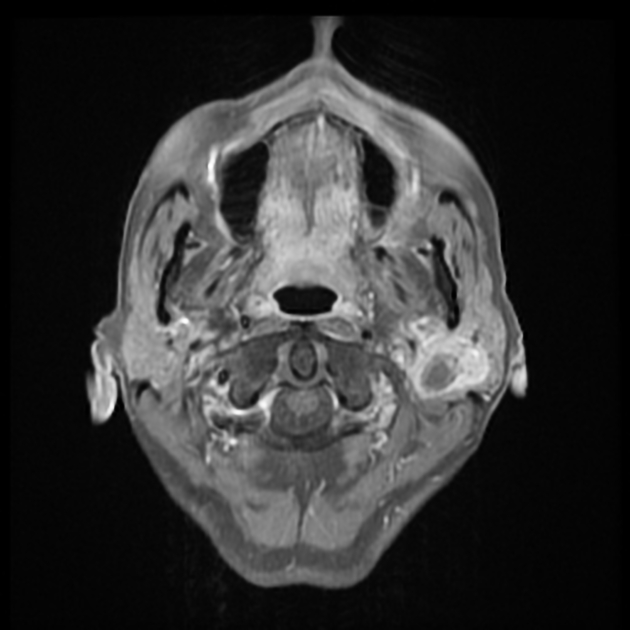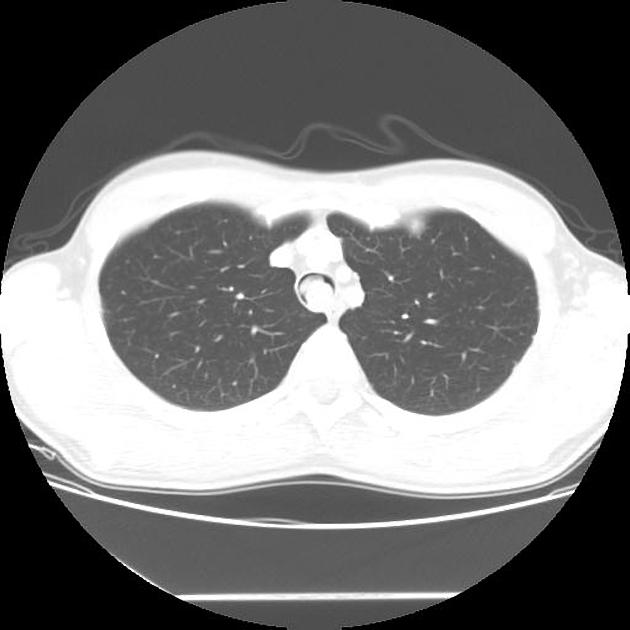Carcinoma ex pleomorphic adenoma is the most common of three malignant mixed tumors of salivary glands, and are thought to arise from pre-existing pleomorphic adenomas 1,3.
On this page:
Terminology
Historically, the benign form, pleomorphic adenomas, have also been called benign mixed tumors, however this name is discouraged. It was previously thought that these were a form of teratoma, however, it is now clear that the neoplasm forms from a single layer of germ cells and is purely epithelial in nature 3.
Epidemiology
These tumors usually occur in older patients (6th to 8th decade), who have had a pleomorphic adenoma in situ for many years (typically 10-15 years) 1.
Clinical presentation
Patients will describe having had a stable parotid mass for many years, before experiencing rapid growth, often associated with painful facial nerve palsy due to tumor infiltration 1.
Radiographic features
As these tumors are aggressive and infiltrating, they present as irregular masses extending into the gland parenchyma and beyond.
MRI
T1: heterogeneous signal due to hemorrhage, necrosis and calcification 1
T2: heterogeneous but generally low signal
ADC: low values (compared to pleomorphic adenomas which typically have elevated values)
For staging see malignant salivary tumor staging.
Treatment and prognosis
These tumors have a high rate of metastasis at the time of diagnosis (25-76%) typically to brain, bone, lungs, and of course local lymph nodes 2.
Differential diagnosis
The differential is essentially that of other malignant salivary gland tumors including:






 Unable to process the form. Check for errors and try again.
Unable to process the form. Check for errors and try again.